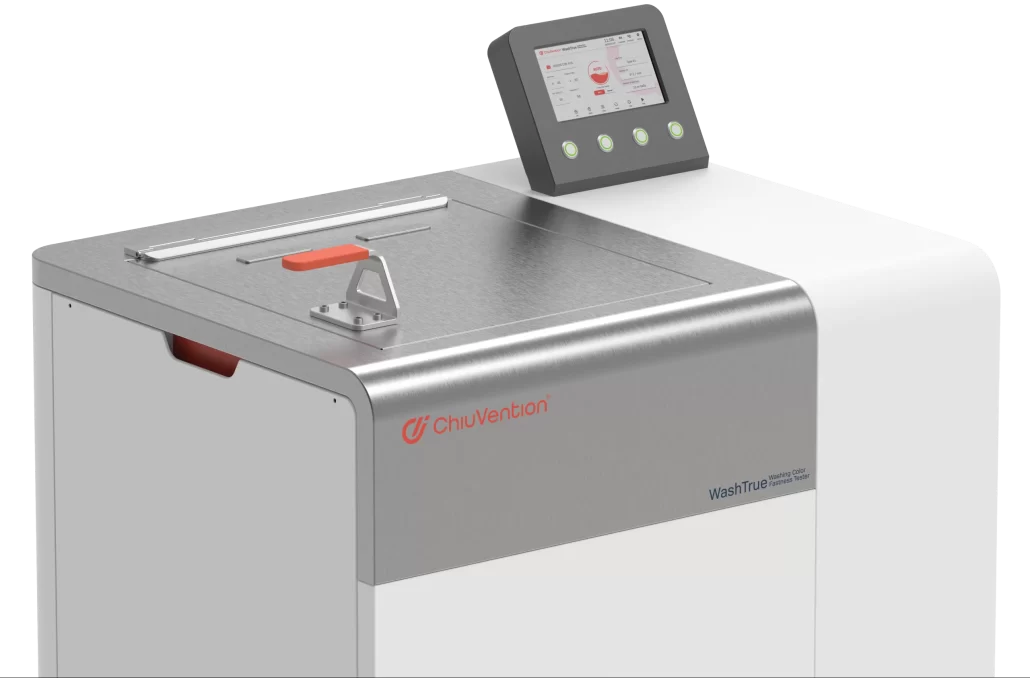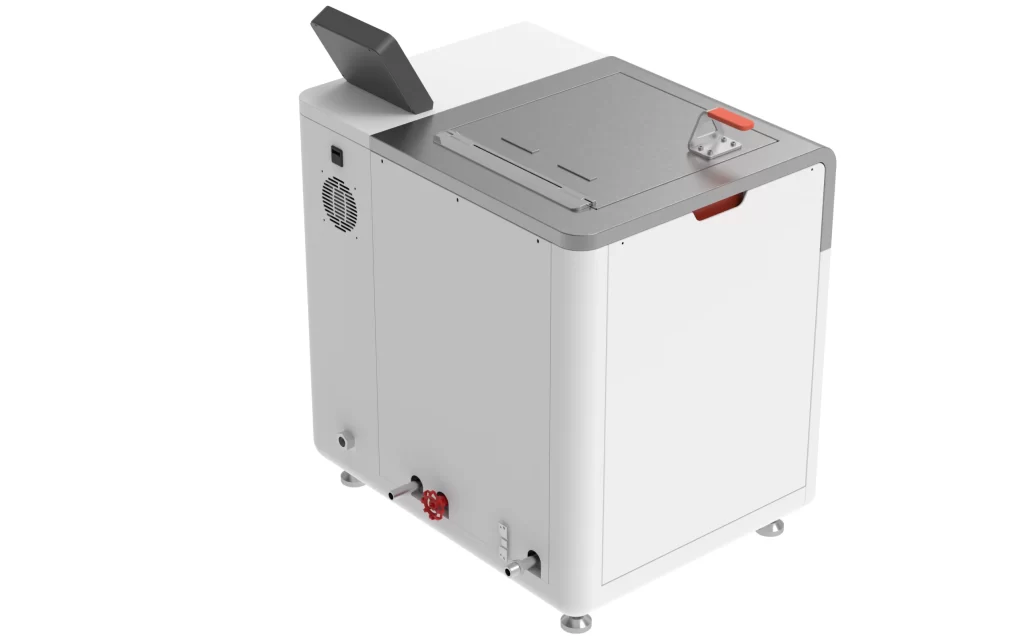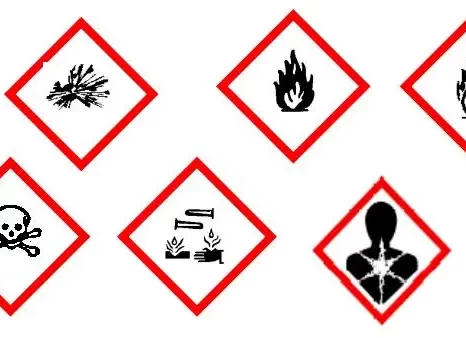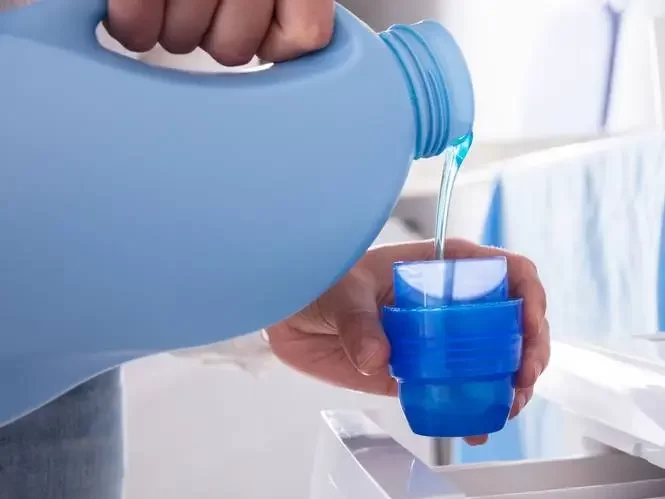What is the wash colour fastness rating?
Washing fastness is a key test. It shows if textiles can keep their colour when washed. The national standard has 5 levels of colour fastness to washing, from 1 to 5. Level 5 is the best and level 1 is the worst. Specifically:
Grade 5: Colours are completely non-fading and white cloth is not stained.
Grade 4: Colours are slightly faded and white cloth is slightly stained.
And Grade 3: Colours are obviously faded, white cloth is obviously stained.
Grade 2: Colour faded a lot, white cloth stained a lot.
Grade 1: Colours almost completely faded, white cloth almost completely stained.
The colour fastness to washing level is vital for textile quality. It relates to their durability and appearance when used.
What is the difference between colour fastness to washing and to soaping?
Define and explain the differences between, “colour fastness to washing” and “colour fastness to soaping.”
Colour fastness to washing means a fabric’s colour can withstand washing. It is an important measure of the fabric’s value in use. It tests fabric color stability in long-term use by simulating washing.
Colour fastness to soaping measures a garment’s resistance to soaping. During washing, it shows how much dyes are removed. Dyes with hydrophilic groups are less wash-fast than those without.
Test Methods and Criteria for Colour Fastness to Washing
Test methods for colour fastness to washing include the use of different detergents and conditions to simulate the actual washing process. For example, we can use different detergents and temperatures to test a fabric’s colour fastness to washing. Common standards include AATCC 61-2013 and JIS L0844-2011, among others.
Test methods and standards for colour fastness to soap washing
The test method for colour fastness to soap washing consists of sewing the textile together with a prescribed white patch fabric and washing it with a soap solution. After washing, we check for discolouration and stains on the white fabric. Common standards include AATCC 61-2013 and JIS L0844-2011, among others.
Difference between colour fastness to washing and colour fastness to soaping
Colour fastness to washing tests fabric colours in various washes. Colour fastness to soaping focuses on dye loss during washing. Wash fastness tests use more detergent and agitation to mimic washing. Soap fastness tests focus on soap’s effect on the dye.
What does a wash fastness test measure?
The colour fastness to washing test measures how well textiles hold their colour after many washes.
The colour fastness to washing test is an important part of textile quality testing. It simulates the washing conditions that textiles will face in use. It then tests, using standard methods, how well textiles hold their colors after repeated washes. The test seeks to assess the durability of textiles in washing. It ensures that the product keeps its good appearance and quality during use.
During the test, we consider the following key factors.
Simulating the washing process: the test simulates actual washing conditions. It includes water temperature, washing time, mechanical action, and other elements. This creates test conditions close to the real environment.
Measuring colour change:
We test a fabric’s color fastness by washing it and checking for any color change. Colour fastness is usually expressed in numbers or grades. Smaller numbers or lower grades mean greater colour fading, and vice versa.
Data Recording and Analysis:
The tester can record data from each test. This includes colour changes, and the washing time and temperature. Analysing this data can give manufacturers, designers, and quality control teams valuable feedback.
Multiple test modes:
The instrument usually has multiple test modes. This meets the needs of different types of fabrics. It can test the colour fastness of single-colour and multi-colour patterned fabrics. It will do this under various washing conditions.
Automated operation:
The colour fastness to washing tester usually has an automated control system. It can automatically complete the tasks of pre-test preparation, washing, and data recording. This greatly improves the test’s accuracy and efficiency.
Safety Protection Function:
The washing fastness tester has safety devices. They protect the instrument and the operator. These include an anti-dry burning function and a motor thermal protection function. They ensure the instrument shuts down or takes safety measures if it has a problem. This prevents damage to the equipment and injury to personnel.
These tests ensure that textile products look good and work well. They must meet consumers’ needs and expectations.
How to choose a colour fastness to washing tester?
When selecting a colour fastness to washing tester, you must consider several factors. This is to ensure the test is accurate and efficient. Here are some key points to help you make an informed choice:
Compliance with test standards:
Ensure your colour fastness tester meets ISO105, AATCC, BS1006, and JISL0860. These standards ensure reliable, comparable test results.
Instrument characteristics:
Consider the instrument’s features. They include solid-state relays to control the heater, the gearing, and the flick switches. These features affect the instrument’s stability and durability. For example, solid-state relays control heating tubes for stable temperatures. Also, electronic flick switches with no mechanical contacts boost reliability and lifespan.
Technical parameters:
Check the instrument’s technical specs. These include the test cup’s capacity, the distance from the center of the rotating frame to its bottom, the rotation speed, and the ranges for time and temperature control. These parameters directly affect the accuracy and efficiency of the test. A larger test cup and precise time and temp control can better simulate the wash conditions. This will yield more accurate test results.
Safety protection:
Check if the instrument has safety features. Look for anti-dry burn protection and water level sensors. These can ensure safe testing and avoid damage from misuse.
Brand and quality assurance:
Choose a well-known brand and a high-quality tester. This will ensure the instrument’s performance and quality. You’ll also get good after-sales support.
Delivery cycle and maintenance and after-sales service:
Know the supplier’s delivery cycle and service response time. This is vital for the test’s continuity and timeliness.
Price and cost:
Consider the instrument’s price and transport costs. Ensure the total is within budget.
In summary, choose a washing colour fastness tester by considering its:
Standard compliance,
Characteristics,
Technical parameters,
Safety,
Brand reputation,
Cost,
Supply and after-sales service.
This ensures it meets test requirements and gives reliable results.
How to maintain the colour fastness tester?
The maintenance of the washing fastness tester includes routine and regular tasks.
Daily maintenance:
During the test, if you have not conducted the test for a long time, please disconnect the power supply.
During use, you should clean and maintain the tester regularly. This is especially important for parts that can collect oil and dirt. These include the adjusting mechanism, the platform, and the power cord.
Regularly clean and check measuring tools, like the platform and its clearance. Check for damage.
When storing the equipment, keep it in a dust-proof, dry place, away from direct sunlight.
Regular maintenance:
Regularly inspect, maintain, and clean the equipment. Ensure it is always in good condition.
Regularly inspect equipment with mechanical and electrical parts. You should also clean and lubricate it. This will ensure stable operation.
Maintenance staff should regularly overhaul the equipment. This is to ensure its safety, precision, and stability.
Daily, regular maintenance of the washing test machine is vital. It ensures its performance and lifespan. It also protects the operator’s safety.
How to operate the colour fastness to washing test?
I. Test equipment The following equipment is needed for the colour fastness to washing test:
1. Colour fastness to washing tester:
It simulates the washing process in a home or industrial washing machine.
2. Rating light source box:
To provide a standard light source for comparing the colour change of the specimen.
3. Dyes and pigments:
To provide a standard light source to compare the colour change of the specimen.
4. Weighing equipment:
For weighing dyestuffs and pigments.
5. Glass or stainless steel containers:
For preparation of test solutions.
6. Stirrer:
For stirring the test solution.
7. Drying rack:
For drying the test solution.
II. Specimen Preparation
1. Select a textile sample. It must match the texture, thickness, and color of the actual product.
2. Cut the specimen to a certain size (generally 10 x 10 cm) and mark the sample number.
3. Put the specimen into the drying oven to dry for subsequent dyeing.
III. Dyes and pigments
1. Select dyes and pigments based on the test requirements. Ensure their quality and purity.
2. Mix the dyes and pigments as per the specified ratios. Then, prepare the test solution.
IV. Test solution
1. Select the right concentration of dyes and pigments. It depends on the specimens and test requirements.
2. Add water to the glass or stainless steel container. Then, add the dyes and pigments. Stir well to prepare the test solution.
3. Pour the test solution into the dyeing machine or dye by hand. 4. 4. dry the dyed specimen and set aside.
V. Test Procedure
1. Put the prepared specimen into the colour fastness to washing tester. Then, wash it using the specified procedure.
2. During the washing process, record the colour change of the specimen.
3. After washing, take out the specimen for drying.
4. Place the dried specimen into the rating light source box, observe the colour change and rate it.
5. Repeat the above steps for each specimen.
VI. Evaluation of results
1. Test the specimen’s wash fastness. Use the rating results.
2. Compare the wash fastness of different samples. Analyze the reasons for any differences.
What should I pay attention to when using the colour fastness to washing tester?
When using the colour fastness tester, note these points for accuracy and safety:
Follow laboratory practices and wear protective eyewear while in the laboratory.
Handle all chemicals with care to ensure no contact with eyes and skin.
Test solutions for testing should be ready to use as needed.
AATCC 1993 Standard Reference Detergents can be sensitising. Avoid contact with eyes and skin.
You must grade test results using a standardized light box.
Safe rain showers should be nearby for emergency use.
Install a rapid drainage system and an effluent disposal tank.
When using the instrument, refer to the manufacturer’s safety instructions.
How does the colour fastness to washing test ensure the accuracy of the test?
Also, to ensure the test’s accuracy, complete the following tasks:
Regular calibration:
Regularly calibrate the washing fastness tester, as recommended by the manufacturer. This includes checking its basic functions, accuracy, and washing procedures.
Daily Inspection:
Before using the instrument each day, do a simple inspection. This is to ensure it is in good working condition.
Cleaning and Maintenance:
Clean the inside and outside of the instrument regularly. This will prevent dirt and residue from affecting the test results.
Parts Replacement:
Replace worn or aged parts, like washing chambers and temp sensors, promptly.
Operator training:
Ensure that the operator is professionally trained. They must know the specs and precautions of the colour fastness to washing tester.
Accurate Record:
Require operators to accurately record the conditions, steps and results of each test.
Control of testing conditions:
To ensure test accuracy, maintain consistent washing conditions. This includes the washing liquid’s composition, and the washing time and temperature.
Comparison and verification:
Regularly, compare the washing fastness tester to other accepted methods. This will verify its accuracy.
How to analyse the test results of the colour fastness to washing tester?
The washing fastness tester analyses the test results in these steps: First, sew the test fabric to one or two pieces of the specified lining fabric. Then, the solution places it in a soap solution or a mixture of soap and anhydrous sodium carbonate.
Test phase:
Mechanical agitation followed by rinsing and drying at the specified time and temperature.
Evaluation phase:
A grey sample card checks the specimen for discolouration. It also checks the lining fabric for staining.
These standards define the tests to ensure results are accurate and comparable. We must analyze the test results. This involves the specimen’s discolouration and the staining of the interlining fabric. Both are key indicators of textiles’ colour fastness to washing.
Also, the washing tester’s colour fastness parameters are vital. They ensure accurate test results. These include: the test cups’ capacity, the distance from the centre of the rotating frame to the cups’ bottom, the rotating speed, and the time and temperature control ranges and errors. Precise control of these parameters is essential. It simulates the actual washing conditions.
What are the applications of the colour fastness to washing test?
The washing fastness test is widely used in textile printing. It applies to clothing, home textiles, car interiors, and more.
In textile printing and dyeing, colour fastness to washing tests help manufacturers. They ensure their products’ colours are stable under various washing conditions. This avoids returns due to poor colour fastness. This is vital for product quality. It affects market acceptance and brand reputation.
In apparel, washing colour fastness is key to quality for brand owners. It is directly related to the consumer’s wearing experience and brand image. The test ensures that the clothing’s colour and appearance hold up after many washes. This boosts consumer satisfaction and loyalty.
The home textile sector has strict washing colour fastness requirements. They relate to the durability and comfort of products like bedding and towels. The colour fastness to washing test ensures that home textiles won’t fade or deform from frequent washing. This will prolong the products’ lifespan.
The automotive interior sector values the colour fastness to washing test. It impacts the cleanliness and look of a car’s interior. Car seats, carpets, and other interior materials must pass a colour fastness test. It checks that washing won’t cause colour to fade or stain the interior. This improves the car’s quality and user experience.
In short, the washing test affects product quality and safety. It also impacts consumer satisfaction, brand image, and market competitiveness.
For more information on textile testing methods/standards
or textile testing machines, contact us:
What’s App: +86 180 2511 4082
Tel: +86 769 2329 4842
Fax: +86 769 2329 4860
Email: medium@chiuvention.com







